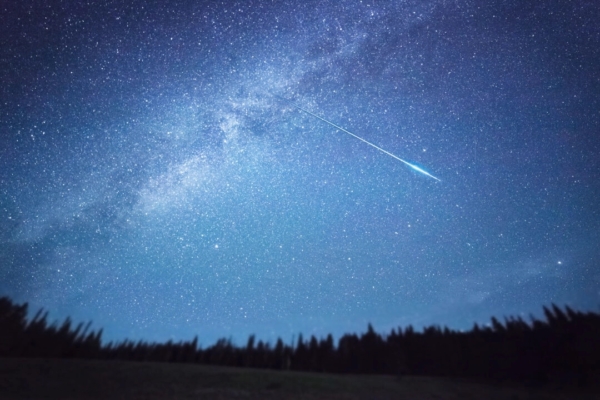The Leonid Meteor Shower, like a fiery rain falling from the sky, surged towards the Earth a full 15 minutes after riding on the tail of a comet, with tens of thousands of them descending. In November 1966, the famous Leonid Meteor Shower displayed its awe-inspiring magnitude, with the meteor storm occurring every 33 years leaving stargazers dazzled.
This November, the Leonid Meteor Shower will not be the periodic major storm as before, but they will return as usual each year, radiating from the Leo constellation. Unless history changes its mind, the Leonids will only whimper, not roar.
There is a question in astronomy about when meteors appear and why they are so unpredictable. They always show up, but the quantity is another matter.
The last significant Leonid Meteor Shower was in 1999, separated from the previous storm by 33 years. Scientists point out that in the year leading up to both meteor showers, the comet 55P/Temple-Tuttle had passed by the Sun, laying the foundation for the meteor storm. When comets fly close to the Sun, they leave behind a trail of debris, much like what 55P/Temple-Tuttle did in 1965 and 1998. Whenever the Earth passes through these fragments, we witness a blazing meteor shower cascading down. Cosmic dust encounters our atmosphere and burns up, creating fiery streaks known as meteors in the sky.
If things unfold as scientists predict, the next major Leonid Meteor Shower will not occur until 2032 when comet 55P/Temple-Tuttle returns. But we can never be certain. The Leonids have defied expert predictions in the past.
It is expected that on November 18, 2024, the Leonid Meteor Shower will peak, but it will not be a storm of shooting stars because this time only 10 to 15 meteors will appear per hour, far from the 1,000 meteors needed for a storm. The points from which they appear to radiate in the sky are called radiant points. The radiant point of the Leonids will rise before midnight in mid-November. Located near the brightest star in the Leo constellation, Regulus, it is named the Leonid Meteor Shower.
Meteor experts advise against staring directly at the radiant point or searching for meteors within the Leo constellation. Instead, try lying on a lawn chair and enjoy the sky as much as possible as the meteors radiate outward from the Leo constellation, leaving streaks across the sky. Staring directly at Leo may cause the meteor shower to shoot straight towards you, making it less visible.
When observing the meteors, don’t forget to consider the moonlight factor. Since the full moon falls on November 15, a waning full moon will obscure some of the spectacular displays of the Leonid Meteor Shower on November 18.
Each November as the Earth orbits the Sun, it collides with a comet dust particle, generating meteors. Our planet has been doing this for millions of years. In November 1833, observers witnessed a storm with 100,000 meteors falling per hour. The witnesses strongly felt Earth’s journey through space, as if the planet were crossing a vast cosmic river. This sight left such a deep impression that scientists have been monitoring the Leonid Meteor Shower since then.
In 1865, astronomers first noticed comet 55P/Temple-Tuttle and determined it to be the parent body of the Leonid Meteor Shower. Calculations revealed that it orbits the Sun every 33 years. Each time it returns and approaches the Sun, it sheds new material, causing meteor outbursts. That year, with the comet right in front of them, they anticipated an imminent storm.
However, the great meteor shower they expected in 1866 never materialized. In the eyes of the public, it was a major failure for astronomers, regarded as one of the biggest setbacks in the field of astronomy at that time. That’s how meteors are. They defy expert predictions.
On average, when the Leonid Meteor Shower peaks in mid-November each year, an average of 10 to 15 meteors can be seen per hour. Astronomers say that this year’s event will be somewhat typical, and moonlight will dull some of the spectacle. Still, you might seize the opportunity—who knows—perhaps you’ll be very lucky.

